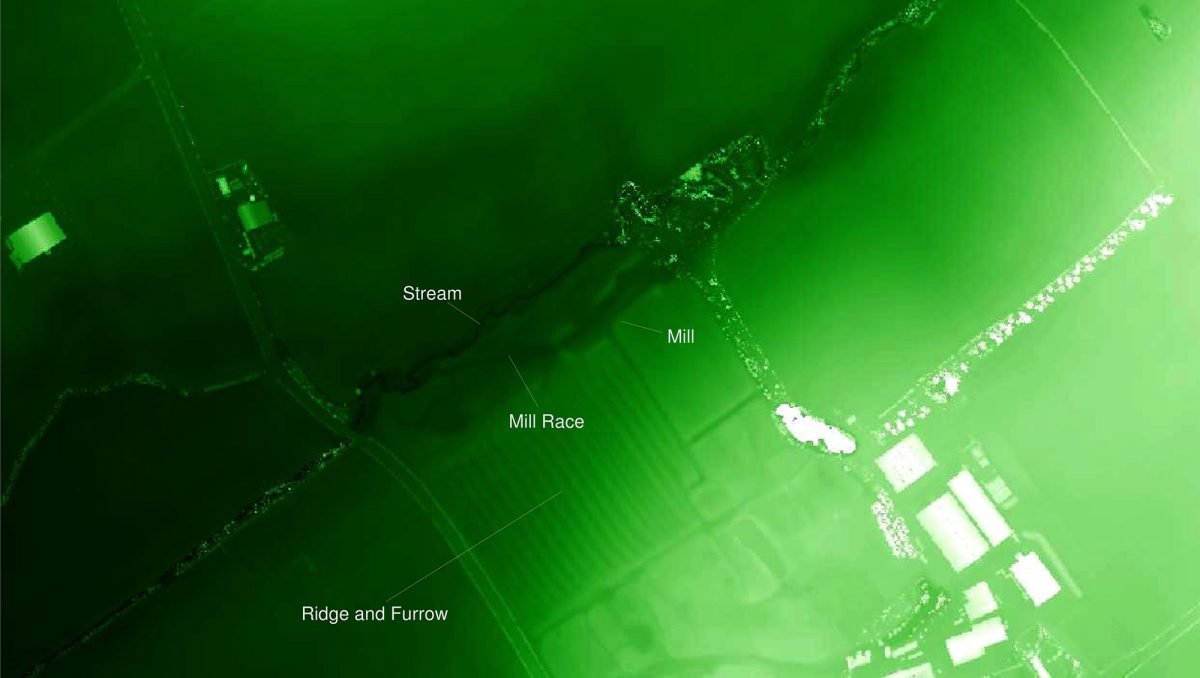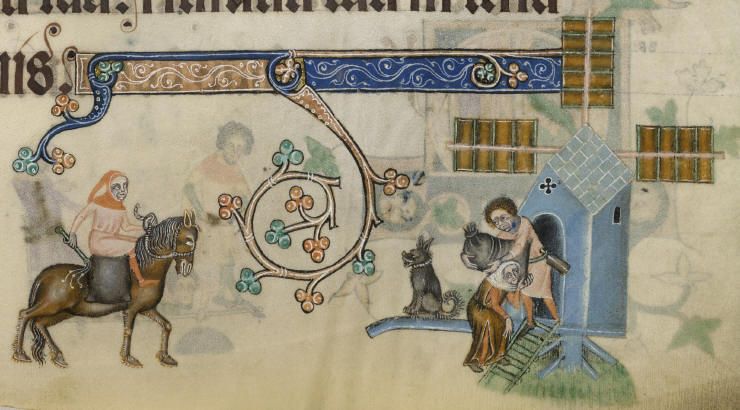Milling
Monasteries, manors & economic powerhouses
Topic 2: Milling
One of the rights that the manor would hold, is the right to own a mill and mill grain.
Water mills
The earliest mills were water mills and could be of timber or stone construction. To operate them would require a supply of running water.
This was often a stream that was modified to create pool and a weir (dam) or race (channel) to control the flow of water onto the wheel.
Mill races can be quite shallow, long and straight, and as such can be confused for drainage or boundary ditches.
The path of the channel, which should begin and end at a known watercourse, and the drop-in height from one end to the other (drainage ditches tend to be level) will indicate whether or not the feature is a mill race or another feature.
LIDAR image showing surviving earthworks of medieval mill and mill race at East Torrington.
Windmills
Windmills are believed to have been developed in the later part of the twelfth century and were originally post-mills with four sails turning in the vertical axis.
Medieval illustration of a windmill from the Luttrell Psalter (Image: The British Library)
The evidence of medieval illustrations and excavated windmill foundations suggest that the medieval windmills were smaller than surviving examples of post-mills, with possibly a single story containing the machinery and a single set of mill stones.
Post-mills could be constructed with the supporting post set into the ground, or they may have had a cross frame that was subsequently buried beneath a mound. A number of the low circular mounds around the county have been identified as medieval mill mounds.
It is possible that the location of more recent, post-medieval mills, may be related to earlier mill sites and the street name Mill Lane, can pre-date surviving 19th century mill towers. This is one area where documentary research can be used to try and determine the age of a milling site.


